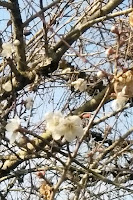December 29, 2021
Japan entering 3rd year of fight against covid-19 pandemic

The deadly new virus broke into Japan in mid-January 2020, when a Japanese man was confirmed as Japan's first covid-19 case after returning from Wuhan, China. The news did not draw so strong attention in the country, but Japan came to realize the magnitude of the pandemic in early February as a cluster of patients positive to the new coronavirus was found among passengers aboard a luxury cruise ship which had entered Yokohama Port.
Then came a decision by the government to close all public schools across the country from the start of March 2020 to protect pupils and students from the pandemic. The policy triggered a shock wave among not just working child-raising families but also various small traders and vendors doing school-linked business, such as school meal providers.
This represented the beginning of Japan's long battle to overcome the covid-19 pandemic. In the course of about two years from early 2020, Japan experienced five waves of surge in the number of daily covid-19 positive cases. A total of over 1.7 million people have been found to be positive to the virus so far in Japan, among them fatal cases surpassing 18,000.
Japan has no strong anti-pandemic legal measures, like city lockdown. Japanese people have come to be accustomed with wearing facial masks, using hand disinfectors placed at the entrance of public places and shops, and taking a social distance from each other at busy locations.
The year-end and New Year's holiday season is one of the most important periods for Japanese families and friends to get reunited and confirm their individual links, visiting temples and shrines together to share their happy time.
In January, many famous Japanese shrines are flooded with New Year's worshippers, but amid the pandemic, Japanese are recommended to avoid a congestion of worshippers in the early days of January. Most shrines are ready to accept worshippers paying New Year's homage even before the start of the year.
Such early New Year's worshippers were seen at some shrines on fine days in early December, among them young girls accompanied with parents.
It remains unseen when the covid-19 pandemic will end, but the series of new daily life rules and customs is expected to come to stay in Japan's society sometime in the not too distant future.









